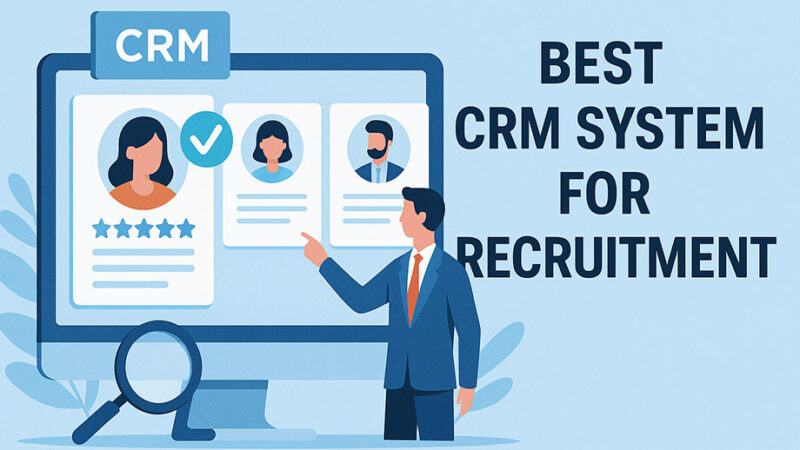How to Get B2B Clients Without LinkedIn: 12 Proven Strategies That Actually Work
While LinkedIn dominates B2B marketing conversations, successful businesses have been acquiring clients long before social media existed. Whether you’re looking to diversify your lead generation efforts or simply prefer alternative approaches, numerous effective strategies can help you build a thriving B2B client base without ever logging into LinkedIn.
Why Look Beyond LinkedIn for B2B Client Acquisition?
LinkedIn’s popularity has created intense competition for attention. Your prospects’ inboxes are flooded with connection requests and generic sales messages. By exploring alternative channels, you can:
- Reach decision-makers through less saturated channels
- Stand out from competitors who rely solely on LinkedIn
- Build more diverse lead generation systems
- Reduce dependency on a single platform
- Access prospects who aren’t active on LinkedIn
1. Master the Art of Strategic Cold Email Outreach
Email remains one of the most direct paths to decision-makers. The key lies in precision and personalization rather than volume.
Building Your Target Email Lists
Start with comprehensive prospect research using tools like Apollo, ZoomInfo, or Hunter.io. Focus on companies that match your ideal customer profile, then identify specific decision-makers within those organizations.
Crafting Compelling Email Sequences
Your initial email should accomplish three things: demonstrate research, highlight a specific problem, and offer clear value. Skip generic introductions and dive straight into how you can solve their challenges.
Create a multi-touch sequence spanning 2-3 weeks, with each email providing additional value or addressing potential objections. Track open rates, response rates, and conversions to continuously optimize your approach.
2. Leverage Content Marketing for Organic B2B Lead Generation
Publishing valuable content attracts prospects naturally while establishing your expertise in the marketplace.
Strategic Blog Content Creation
Develop content that addresses your prospects’ biggest challenges at each stage of their buying journey. Focus on search terms your ideal clients use when researching solutions.
Write detailed case studies showcasing specific results you’ve achieved for similar companies. Include concrete metrics and challenges overcome to build credibility.
Advanced SEO Optimization
Research keywords with commercial intent that your prospects search for. Target long-tail phrases like “how to reduce manufacturing costs” or “best CRM for growing SaaS companies” rather than broad terms.
Optimize your content for featured snippets by structuring answers in clear, concise formats that Google can easily extract and display.
3. Harness the Power of Industry Events and Networking
Face-to-face interactions often convert better than digital touchpoints, making events valuable for B2B acquisition.
Maximizing Trade Show ROI
Research attendee lists beforehand and schedule meetings with key prospects. Prepare compelling booth displays that attract your ideal clients rather than general foot traffic.
Follow up within 48 hours of meeting prospects, referencing specific conversation points to stand out from other vendors they encountered.
Building Relationships at Professional Associations
Join industry associations where your prospects are members. Volunteer for committees or speaking opportunities to increase your visibility within the community.
Regular participation in association activities builds trust and positions you as a committed industry participant rather than just another vendor.
4. Develop Strategic Partnership Networks
Partnerships can provide access to established client bases and create mutually beneficial referral opportunities.
Identifying Complementary Service Providers
Look for businesses that serve your target market but don’t compete directly with your services. For example, if you provide marketing automation, partner with web design agencies or business consultants.
Structuring Win-Win Partnership Agreements
Create formal partnership agreements that outline referral processes, commission structures, and mutual obligations. Provide partners with marketing materials and training to help them effectively refer your services.
5. Implement Direct Mail Campaigns That Break Through Digital Noise
Physical mail stands out in an increasingly digital world, making it particularly effective for reaching busy executives.
Designing Memorable Direct Mail Pieces
Create dimensional mailers that require opening rather than flat pieces that get discarded quickly. Include relevant resources like industry reports or useful tools rather than just sales materials.
Timing and Follow-Up Strategies
Coordinate direct mail with phone calls or emails for maximum impact. Track delivery dates and follow up within a few days while your package is still top of mind.
6. Optimize Cold Calling for Modern B2B Sales
Despite digital alternatives, phone calls remain highly effective for reaching decision-makers directly.
Research-Driven Call Preparation
Before dialing, research the prospect’s company challenges, recent news, and industry trends. This preparation allows you to have relevant conversations rather than generic sales pitches.
Effective Opening Scripts and Conversation Flow
Start calls by mentioning specific research about their company or industry. Focus on booking meetings rather than selling your services during the initial conversation.
Practice handling common objections and have relevant case studies ready to share when prospects express interest.
7. Participate in Industry-Specific Online Communities
While avoiding LinkedIn, numerous other online communities offer networking and lead generation opportunities.
Finding Your Prospects’ Digital Hangouts
Research where your target audience discusses industry challenges. This might include specialized forums, Slack communities, Discord servers, or Facebook groups focused on specific industries or roles.
Adding Value Before Selling
Establish credibility by consistently providing helpful advice and insights before promoting your services. Share relevant resources and answer questions to build relationships naturally.
8. Create and Execute Referral Programs
Satisfied clients often know other businesses that could benefit from your services, making referrals one of the highest-converting lead sources.
Designing Effective Referral Incentives
Offer meaningful incentives that motivate clients to make referrals. This might include service credits, cash bonuses, or exclusive access to new offerings.
Systemizing the Referral Process
Make referring easy by providing templates, case studies, and introduction materials. Follow up regularly with referral sources and track results to identify your most valuable advocates.
9. Leverage Speaking Opportunities and Thought Leadership
Positioning yourself as an industry expert attracts prospects who are already interested in solutions like yours.
Securing Speaking Engagements
Apply to speak at industry conferences, webinars, and local business events. Start with smaller venues to build experience and collect testimonials for larger opportunities.
Creating Valuable Presentations
Develop presentations that provide actionable insights rather than thinly veiled sales pitches. Share specific strategies, case studies, and frameworks that audience members can implement immediately.
10. Utilize Account-Based Marketing Strategies
Focus your efforts on specific high-value accounts rather than casting a wide net.
Identifying Target Accounts
Create a list of 20-50 companies that represent your ideal clients. Research their challenges, decision-makers, and current solutions to develop targeted approaches.
Multi-Channel Account Engagement
Combine multiple touchpoints including email, direct mail, phone calls, and digital advertising to stay top of mind with target accounts over extended periods.
11. Explore Digital Advertising Beyond Social Media
Paid advertising can efficiently reach prospects across various digital channels.
Google Ads for B2B Services
Target keywords that prospects search when actively looking for solutions. Focus on commercial intent keywords like “hire [service type]” or “best [solution] for [industry].”
Industry Publication Advertising
Advertise in trade publications, newsletters, and websites that your prospects read regularly. These placements often have less competition than general advertising platforms.
12. Build Strategic Vendor Relationships
Becoming a preferred vendor for larger companies can provide access to their client networks.
Positioning for Vendor Opportunities
Develop case studies and credentials that demonstrate your ability to serve enterprise clients. Obtain necessary certifications and insurance coverage that larger companies require from vendors.
Maintaining Vendor Relationships
Deliver exceptional results consistently to maintain preferred vendor status. Regular communication with vendor managers can lead to additional opportunities and referrals.
Measuring Success Across Multiple Channels
Track key metrics for each channel including cost per lead, conversion rates, and customer lifetime value. This data helps you allocate resources to the most effective strategies.
Use CRM systems to track prospect interactions across multiple touchpoints, ensuring consistent follow-up regardless of initial contact method.
Creating Your Multi-Channel B2B Acquisition Strategy
Success comes from combining multiple strategies rather than relying on any single approach. Start by implementing 2-3 strategies that align with your strengths and target market, then gradually expand your efforts.
Test different approaches systematically, measuring results and refining your processes based on what works best for your specific market and service offering.
Remember that B2B sales cycles often extend over months, so maintain consistent effort across all channels while allowing time for strategies to generate results.
Conclusion
While LinkedIn remains a valuable B2B marketing channel, numerous alternatives can effectively generate qualified leads and clients. By diversifying your approach across email outreach, content marketing, networking, partnerships, and other strategies, you create a more resilient and comprehensive client acquisition system.
The key to success lies in selecting strategies that align with your target market’s preferences and maintaining consistent execution over time. Start with one or two approaches, master them, then gradually expand your efforts to build a robust lead generation engine that doesn’t depend on any single platform.





